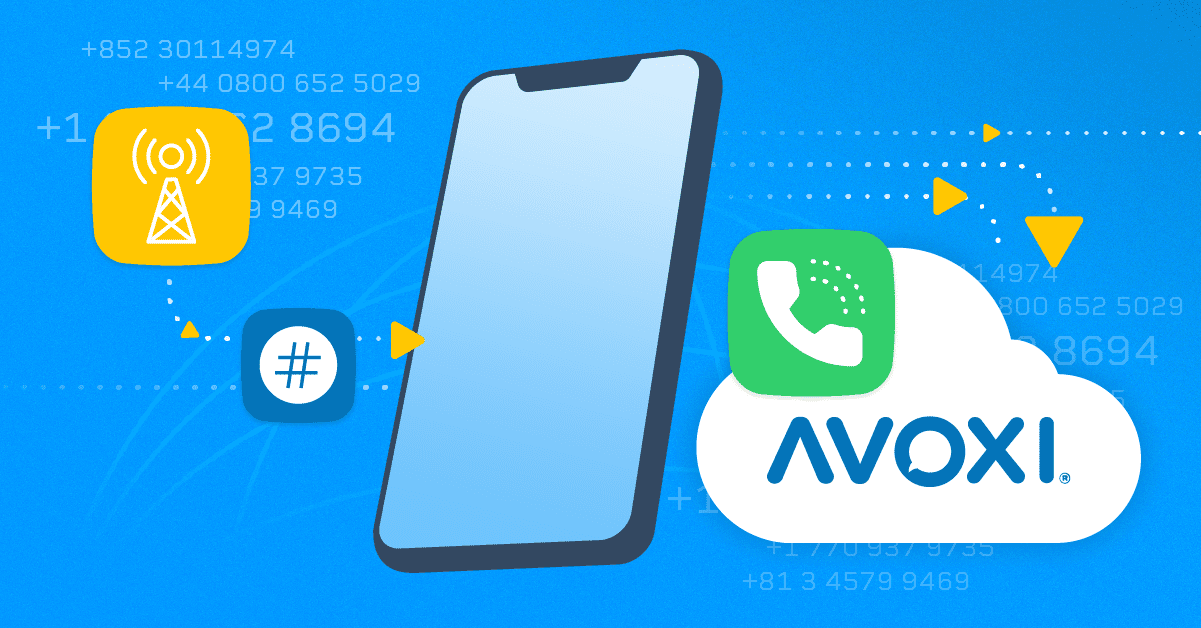Bring Your Own Carrier
Bring Your Own Carrier
Bring Your Own Carrier (BYOC) is a term becoming a buzzword across industries. But what does it mean, and why is it becoming so popular? Let's dive in.
What is Bring Your Own Carrier?
The essence of what is Bring Your Own Carrier lies in its empowering approach to telecommunications. BYOC allows businesses to handpick their telecommunication carrier or Session Initiation Protocol (SIP) trunking service, even using cloud-based contact center platforms.
This concept gained traction when tech giants started offering it as an option, enabling users to leverage their existing telecom relationships while taking full advantage of the cloud's advanced features.
Why is BYOC used?
Bring Your Own Carrier revolves around flexibility, control, and optimization of communication needs. It represents shifting from traditional, rigid telecom solutions to a more adaptable framework.
Businesses can maintain negotiated contracts and relationships with carriers, ensuring continuity and potentially better terms. Moreover, it simplifies the transition to cloud-based services, avoiding the hassle of switching carriers and dealing with new contracts.
BYOC symbolizes a significant shift towards personalized and efficient communication strategies. It's not just about using a cloud platform; it's about enhancing that experience with the choice and control over your telecommunications, blending the best of both worlds for unparalleled efficiency and customization.
SIP Trunking Simplified: The Role of BYOC
Grasping the concept of BYOC within SIP trunking is like unlocking a new level of telecommunications strategy for businesses.
SIP trunking, a method that allows the transmission of voice and other communication services over the internet, becomes even more powerful with BYOC. But what is Bring Your Own Carrier BYOC trunking, and how does it enhance SIP trunking?
When we talk about understanding BYOC in SIP trunking, we're referring to integrating a business's chosen telecom carrier into its existing internet-based communication systems. This synergy seamlessly combines traditional telephony and modern cloud communication benefits.
The question then arises: what is Bring Your Own Carrier SIP trunk? It's essentially a bridge that connects a company's current telecom setup with a cloud platform, offering unmatched flexibility and customization.
The benefits of what is Bring Your Own Carrier SIP trunk BYOC are manifold:
- Customization and Control: Businesses can maintain their existing relationships with carriers while leveraging the advanced features of SIP trunking, such as scalable communication channels and enhanced disaster recovery options.
- Cost Efficiency: By combining SIP trunking with BYOC, companies can optimize communication costs, often achieving better rates and terms due to existing contracts with their carriers.
- Improved Reliability: Utilizing a trusted carrier for SIP trunking ensures high-quality call routing and reliability, which is critical for maintaining business communications.
Industry utilization examples abound, with companies in sectors from finance to healthcare leveraging BYOC in SIP trunking to streamline operations, reduce costs, and improve communication reliability.
This approach simplifies the telecom landscape for businesses and ensures they can adapt quickly to changing market demands without being tethered to a single provider's limitations.
Revolutionizing Cloud Communications with BYOC
Cloud technology has revolutionized businesses' operations, offering scalability, flexibility, and efficiency. The usage of BYOC in cloud technology further amplifies these benefits, providing companies with unprecedented control over their telecommunications infrastructure.
But how exactly does BYOC fit into the cloud ecosystem, and what advantages does it offer?
BYOC, or Bring Your Own Carrier, when integrated with cloud technology, allows businesses to utilize their preferred telecom provider alongside cloud-based services. This approach, often referred to as "bring your own technology", enables organizations to leverage the robust features of cloud platforms while maintaining their established carrier relationships.
The advantages of BYOC in cloud technology are significant:
- Enhanced Autonomy and Flexibility: Businesses can select the best carrier based on cost, quality, and service level agreements (SLAs), ensuring their cloud communications are optimized for their specific needs.
- Cost Savings: By avoiding switching to potentially more expensive or less reliable carriers, companies can maintain their existing pricing structures and negotiate directly with their chosen providers.
- Improved Reliability and Control: With BYOC, companies have more control over their communication networks, including call routing, security measures, and the overall quality of service.
The impact of BYOC on cloud technologies is profound. It democratizes access to advanced communication tools, allowing businesses to tailor their cloud infrastructure to their unique requirements.
BYOC and Communication Platforms
In digital communication, platforms like Zoom and Microsoft Teams have become indispensable for businesses worldwide. Integrating BYOC with these platforms represents a significant leap forward, enhancing their functionality and flexibility.
How do these platforms incorporate BYOC, and what benefits does this bring to their operations?
- Flexibility and Choice: Businesses are not locked into a single telecom provider and can select a carrier that best meets their cost, reliability, and coverage needs.
- Operational Continuity: By using their existing carrier, companies can avoid the disruptions that might come with switching to a new provider, ensuring a smoother transition to cloud-based communications.
- Cost Efficiency: Leveraging existing carrier agreements can lead to significant cost savings, particularly for businesses with favorable or long-term contracts.
BYOC's role in enhancing communication platforms like Zoom and Microsoft Teams underscores the growing need for customizable and flexible communication solutions in today's business environment.
By allowing businesses to bring their own carrier, these platforms offer a level of operational agility and cost efficiency that was previously difficult to achieve, marking a significant evolution in how companies communicate and collaborate.
BYOC & PSTN: Transforming Teams' Telephony
The integration of Bring Your Own Carrier (BYOC) with Public Switched Telephone Network (PSTN) calling, especially within platforms like Microsoft Teams, offers intriguing implications for businesses navigating the complexities of modern telecommunications.
This combination presents a unique interplay between traditional telephony and cutting-edge cloud communication. But how exactly do BYOC and PSTN calling interact, and what influence does BYOC have on PSTN calling in Teams?
Understanding what is PSTN calling in Teams is crucial to appreciating the significance of BYOC in this context. PSTN calling in Teams allows users to make and receive traditional phone calls directly from the Teams platform, extending its functionality beyond internet-based communication to traditional telephony. This is where BYOC comes into play, enabling businesses to use their preferred telecom provider for these PSTN services within Teams.
The implications of BYOC and PSTN calling are multifaceted:
- Seamless Integration: BYOC allows for a smoother integration of PSTN calling within Teams, ensuring businesses can leverage their existing telecom relationships without switching to a new provider or managing multiple contracts.
- Cost and Flexibility: By bringing their own carrier, companies can negotiate the best rates and terms for their PSTN needs, often resulting in cost savings and more flexible contractual terms than being locked into a single provider.
- Quality and Reliability: With BYOC, businesses have more control over the quality and reliability of their PSTN calling. They can choose a carrier known for superior call quality and reliability, enhancing the overall communication experience within Teams.
The relationship between BYOC and PSTN calling in Teams is a significant step forward in telecommunication strategies. It embodies the convergence of traditional and cloud-based communication, offering businesses unprecedented control, flexibility, and efficiency in their communication infrastructure.
Common Questions and Misconceptions About BYOC
As businesses contemplate integrating Bring Your Own Carrier (BYOC) into their communication strategies, several common questions and misconceptions often arise.
Addressing these can help clarify BYOC's role and potential, providing a clearer path for those considering its adoption. Furthermore, understanding the evolving landscape of BYOC adoption amid communication technologies offers valuable insights for future planning.
Common Questions About BYOC
What distinguishes BYOC from traditional telephony services?
BYOC allows businesses to use their existing telecom carrier while leveraging the advanced features of cloud-based platforms, unlike traditional services that often require using the telephony services provided by the platform itself.
Can BYOC always lead to cost savings?
While BYOC offers the potential for cost savings by allowing businesses to negotiate better rates with carriers, the savings depend on various factors, including call volumes and existing contracts.
Misconceptions About BYOC
BYOC is too complex to implement.
Although integrating BYOC with existing systems may seem daunting, many cloud platforms offer streamlined processes and support for BYOC integration, simplifying the transition.
Quality and reliability may suffer with BYOC.
On the contrary, BYOC can enhance call quality and reliability by allowing businesses to choose carriers based on their performance and service levels.
Embracing the BYOC Revolution with AVOXI
As we navigate towards a future prosperous in technological advancements, the movement towards Bring Your Own Carrier (BYOC) adoption is set to accelerate. This surge is fueled by the ever-growing demand for communication solutions that are not just cost-effective but also highly flexible and customizable.
In this transformative era, choosing AVOXI as your trusted partner for BYOC and call management solutions is a strategic move toward unlocking unparalleled communication efficiency. AVOXI's expertise and innovative solutions simplify the BYOC integration process and ensure that your business leverages the most out of this dynamic strategy.
By partnering with AVOXI, you're not just adopting BYOC; you're stepping into a future where your communication infrastructure is as flexible and forward-thinking as your organization. Embrace BYOC with AVOXI and propel your business communication into a new era of efficiency and customization.
Additional Resources

PSTN Replacement
Guide to Voice Termination Services

Retain Phone Number
International
Number Porting

Virtual Phone Line
Benefits of
SIP Trunking
Interested in Learning More?
AVOXI is the cloud communication platform of choice for enterprises and companies with international markets. The road to modernized communications has never been easier, learn what AVOXI can do for you today.